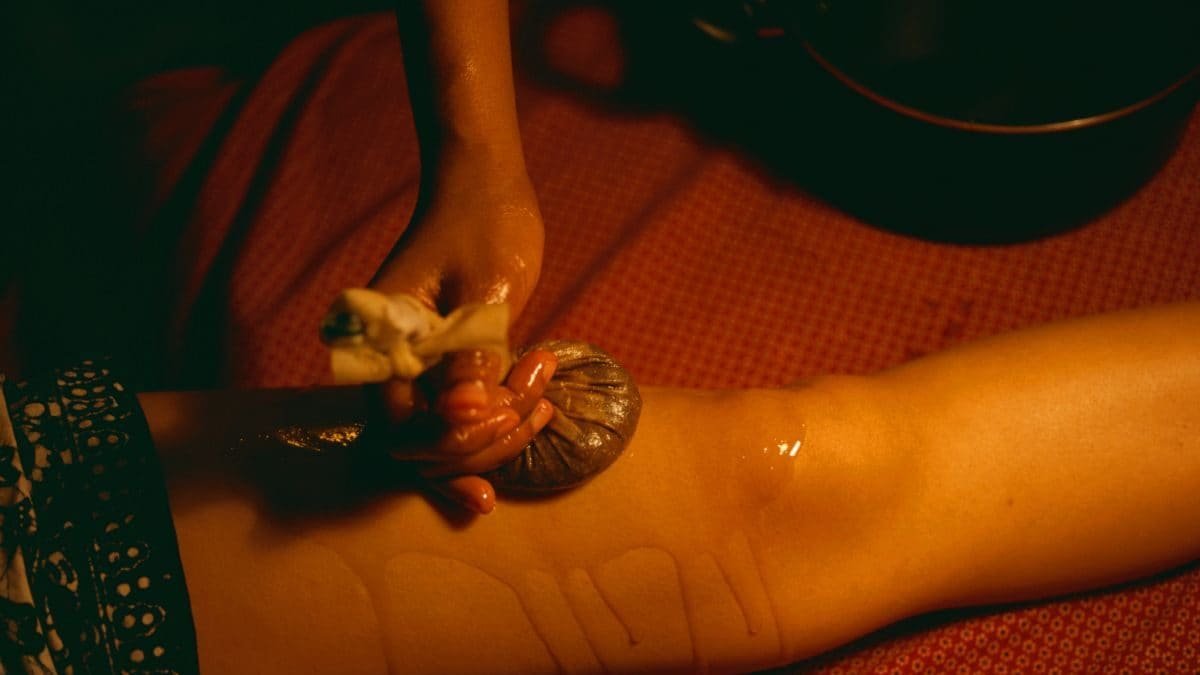Janki Kashyap is in her mid-40s and has been suffering from knee pain for several years now. Every year during the monsoon the pain gets worse, but this year both her knees became swollen and the pain became unbearable. Coincidentally, all this happened shortly after her mother passed away.
She decided to attend a yoga center for a while, more for relaxation than treatment.
After six days of treatment, the pain in her knees had reduced significantly. Three weeks later, she confirmed that the pain continued to reduce. “The pain in my knees has reduced a lot. The yoga therapy definitely helped and the Ayurvedic Janu Basti has worked wonders. With rheumatoid arthritis, there is the usual pain and then there is the pain associated with inflammation and swelling. Janu Basti takes away the pain a second time after just two treatments,” she explained.
Janki had also undergone physiotherapy for other joint pains, but although it helped for a period of time, the pain relief was short-lived.
The yoga practice taught was Sukshma Vyayam, a relaxation practice. Though she had tried practicing yoga by reading books and online articles, she was glad that her yoga therapist showed her exactly where to apply pressure and, importantly, how to breathe correctly. She feels that aligning her breathing smoothly and scientifically with the movements played a key role in getting the benefits. Exercise variations were customized with instructions like, “Press your calf muscles into the floor,” “Now press your knees down,” and “Press your thighs down.”
Why Yoga Sukshma Vyam is the most effective
If your knee joint is worn down, it is best to avoid positions that put strain or stress on the joint. Light exercise is recommended. In addition, you should strengthen the muscles that support the knee joint (thighs, calves, and muscles around the knee) through exercise and stretching.
Sukshma Vyayam contains exercises that effortlessly and delicately work all the joints, muscles and ligaments, improving blood circulation and lubrication in and around the joints. Regular practice restores the state of body and mind and helps control diseases in the body systems. These are especially suitable for those who are unable to perform the asanas due to health problems. *For more information on Sukshma Vyayam, please see the last box.
What is JANU BASTI?
“Janu” means knee and “Basti” means holding.
in Janu BastiA ring of moistened black bean flour (or sometimes plain wheat flour) is placed around the knee. Warm medicated oil is then poured into the ring. Hot oil is poured repeatedly at regular intervals to replace the cold oil. The oil used depends on the patient’s Ayurvedic constitution and condition.
Video Carousel
The treatment usually takes 30 minutes and is followed by a body massage (abhyanga) and a warm compress (svedana).
Why Sukshma Vyam and Janu Basti work in the monsoon
According to Ayurveda, the monsoon season brings about an excess of Vata dosha (the element of air and space in the body). Joints are places where Vata concentrates because they contain air. Vata influences movement and the nervous system, and joints are also connected to the nervous tissue.
Pain in the joints always indicates excess of Vata. Sukshma Vyayam reduces Vata by increasing prana in the joints, muscles, ligaments and tendons and strengthening the muscles around the joints, increasing lubrication, circulation and mobility.
Janu Basti The warm application of selected oils helps restore balance to Vata dosha. The oil penetrates deep into the knee joint, lubricating, increasing circulation and nourishing the tissues.
Video Carousel
Please note: these exercises are only a guide and are not meant to replace the guidance of a yoga teacher, especially in therapeutic situations. Always consult with a doctor and never exceed your capabilities.
The author is a journalist, cancer survivor and certified yoga teacher. He can be contacted at swatikamal@gmail.com.
The treatment usually takes 30 minutes and is followed by a body massage (abhyanga) and a warm compress (svedana).
Why Sukshma Vyam and Janu Basti work in the monsoon
According to Ayurveda, the monsoon season brings about an excess of Vata dosha (the element of air and space in the body). Joints are places where Vata concentrates because they contain air. Vata influences movement and the nervous system, and joints are also connected to the nervous tissue.
Pain in the joints always indicates excess of Vata. Sukshma Vyayam reduces Vata by increasing prana in the joints, muscles, ligaments and tendons and strengthening the muscles around the joints, increasing lubrication, circulation and mobility.
Janu Basti The warm application of selected oils helps restore balance to Vata dosha. The oil penetrates deep into the knee joint, lubricating, increasing circulation and nourishing the tissues.
Top Videos
Show all
Mongolian team’s Paris 2024 Olympic uniform goes viral: How was the costume made?
Nita Ambani’s Exquisite Emerald and Diamond Jewellery Collection Redefines Royalty | DECODED
Isha Ambani’s Best Looks at Anant Ambani and Radhika Merchant’s Wedding | Ambani Wedding
A look at Radhika Merchant’s wedding glamour, from Jamnagar to the reception
Hina Khan says she was in ‘constant pain’ during chemotherapy after breast cancer diagnosis
Please note: these exercises are only a guide and are not meant to replace the guidance of a yoga teacher, especially in therapeutic situations. Always consult with a doctor and never exceed your capabilities.
The author is a journalist, cancer survivor and certified yoga teacher. He can be contacted at swatikamal@gmail.com.
First revealed: 20 July 2024 12:24 IST

